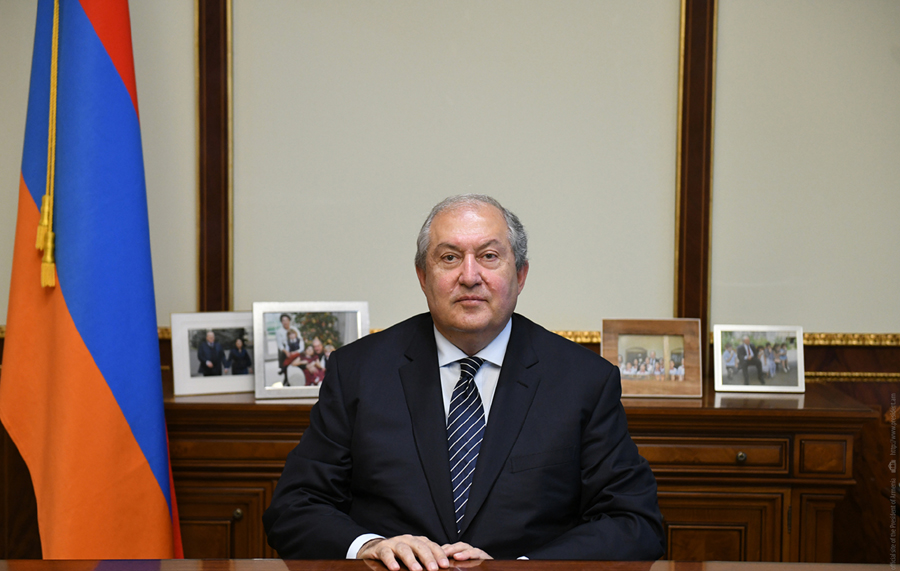100 years on, the Treaty of Sèvres remains an important document for just solution to the Armenian Cause – President Sarkissian

The Treaty of Sèvres was truly a peace treaty, and from this perspective it could have solved one of the most complex issues in our region, the Armenian Question, Armenian President Armen Sarkissian said in an interview with Al-Azmenah.
Before the Treaty of Sèvres, the first conference was held in London between February and April in 1920, when a political decision was taken to create a single, unified Armenian state.
“Under the Peace Treaty of Sèvres, Turkey would recognize Armenia as a free and independent country. Turkey and Armenia would agree to leave the issue of demarcating the borders between the two countries in the provinces (states) of Erzurum, Trabzon, Van and Bitlis to the decision of the United States of America (President Woodrow Wilson’s Arbitral Award, the centenary of which will also be marked on November 22), and immediately accept this decision with all his proposals related to granting Armenia access to the sea and demilitarizing all the neighboring Ottoman territories,” President Sarkissian noted.
He added, however, that the Treaty of Sèvres did not receive final ratification (therefore it remains unperfected).”It is true that the decisions regarding Armenia were not implemented due to changes in the international policy situation, but their cancellation was never announced,” he stated.
“The Sevres Treaty is an international legal document, and it is also de facto enforceable, because based on this document the status of a number of Middle Eastern countries was established or derived in the period following the First World War, especially Syria (currently Syria and Lebanon), Mesopotamia (now Iraq and Kuwait), Palestine (now Israel and the Palestinian Authority), Hejaz (now Saudi Arabia), Egypt, Sudan, Cyprus, Morocco, Tunisia and Libya,” the President sad.
Thus, he added, the Treaty of Sèvres could have contributed to solving the Armenian Question, and the Armenian people would unite on their historical lands.
“It could have, at least partially, cured the damage inflicted on the Armenian people after the Armenian Genocide in 1915, and create conditions for the settlement of relations between Armenia and Turkey, and the promotion of lasting peace between the peoples of our region,” Aarmen Sarkissian noted.
However, in September 1920 the incursion against the Republic of Armenia unleashed by the Kemalists ended with the abolition of the independent Armenian statehood and the sovietization of Armenia.
“Thus, the long struggle of the Armenian people did not succeed in uniting the divided parts of Armenia into one state. But the Republic of Armenia and the Armenian people as a whole, scattered around the world, are still the inheritors and the owners of their history and civilization spanning thousands of years,” President Sarkissian stated.
“Whatever they do, no matter how they deny the obvious facts, no matter how much they remove the monuments of the Armenian heritage and the Armenian civilization and wipe the traces of Armenians over the historical lands of Armenia, they cannot erase the memory of the Armenian people,” he added.
According to President Sarkissian, until today, the Treaty of Sèvres remains an important document on the right of the Armenian people to reach a just solution in the Armenian Question.
